
2023 Tata Nexon: Punching Above!
- Sep 6, 2023
- Views : 6255

Hyperion, Kryojet, DCA, Atlas - dropping so many new terms, at first, the Tata Curvv comes across as the overqualified kid in class whose vocabulary was just levels above anyone else’s.
Atlas: It’s Tata Motor’s new platform that has everyone wondering what exactly defines a new car platform. Is it the engineering that went into it or the difference in experience felt by someone buying it? Perhaps, the answer lies somewhere in between
Hyperion: Tata’s long awaited direct-injection petrol engine that uprates performance vs their Revotron petrol engine (shared with the Nexon, also offered in the Curvv’s base-mid variants) by a significant if not monumental margin
Kryojet: Possibly a great name for ISRO’s next launcher but it’s what the Curvv’s diesel engine is called. While said to be a new engine, the discernable difference it makes on paper is marginally more power than the Nexon’s diesel.
DCA: Dual-clutch automatics all round! It’s the only automatic transmission tech offered with the Curvv with the highlight being the unique combination of a diesel twin-clutch gearbox
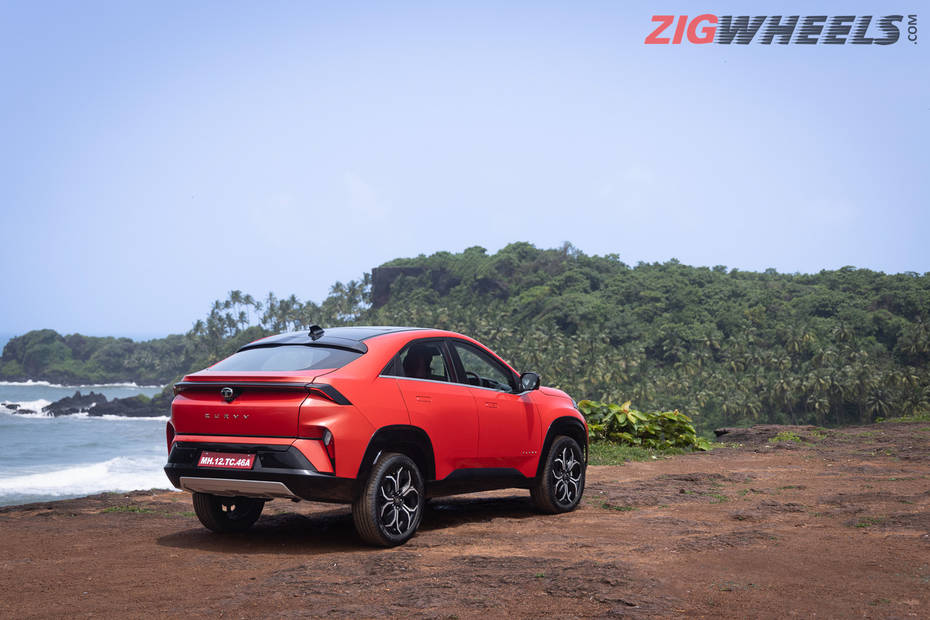
The Curvv’s styling package is one that needs to be seen in the metal to truly do justice to. Sure, a coupe roofline with the size of a compact SUV was never going to deliver BMW X6 levels of wow, but….wow, the Tata Curvv simply is a great bit of design. People often believe that Indians only care about sensible things like space, practicality and fuel-efficiency when it comes to their cars but it’s only when they go to buy one themselves that they realize the impact of great design.
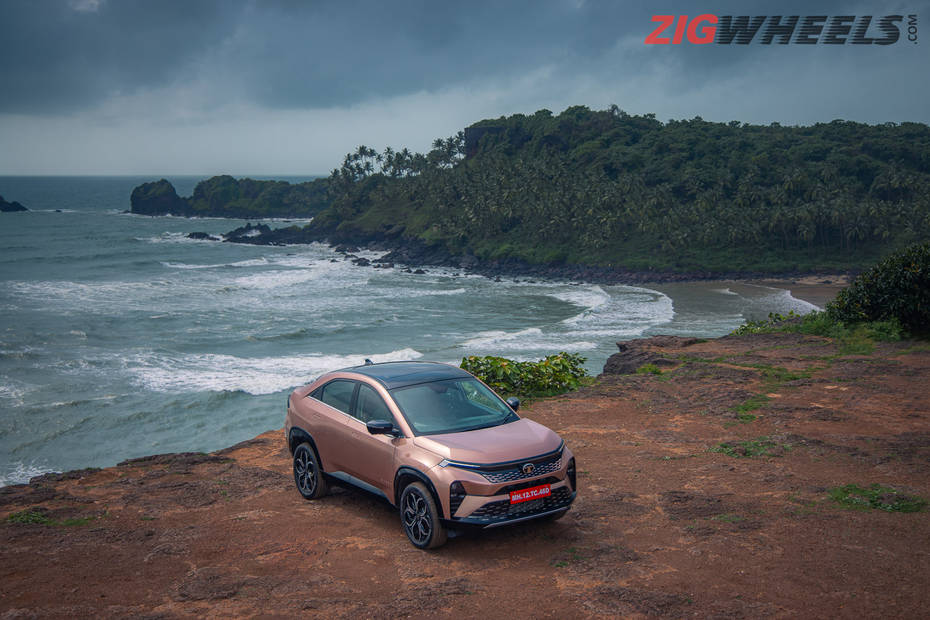
What stands out about the Curvv isn’t just a matter of the coupe roofline, it’s how it balances subtlety and flash. You’d think a car painted gold with 18-inch flower-petal pattern wheels and flush-fitting door handles would be louder than anything designed by Balenciaga; but it’s classy.
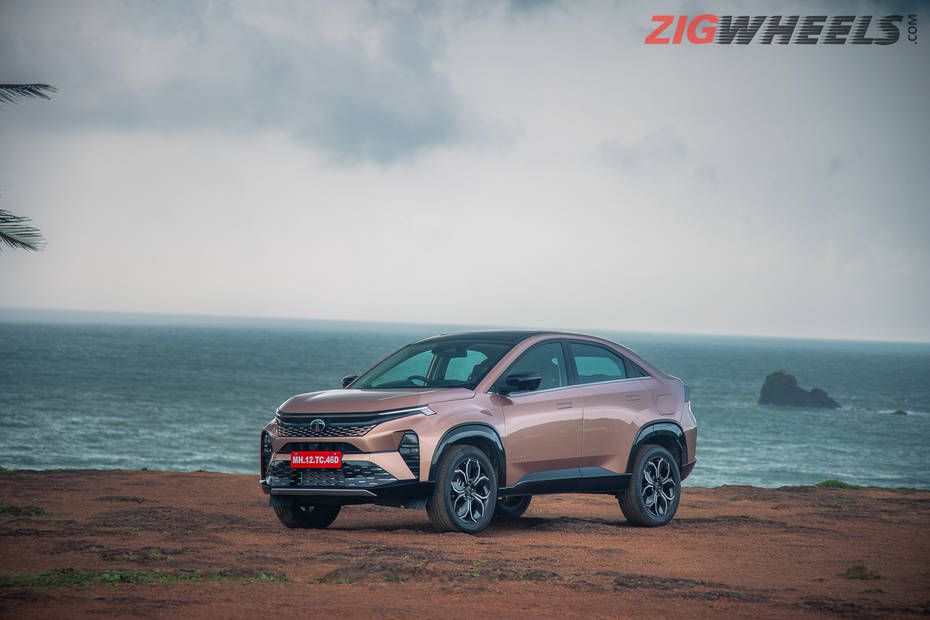
What is odd though is the front end. Connected LEDs with lights animations linked to the door locks, just like the rear, but then for a car that’s so different from its segment, it does look almost exactly like the Nexon. Not that the Nexon isn’t a looker but family looks do take away some distinction. Bottomline though, the looks won’t just pique interest, it might be the trigger to buy one for many.
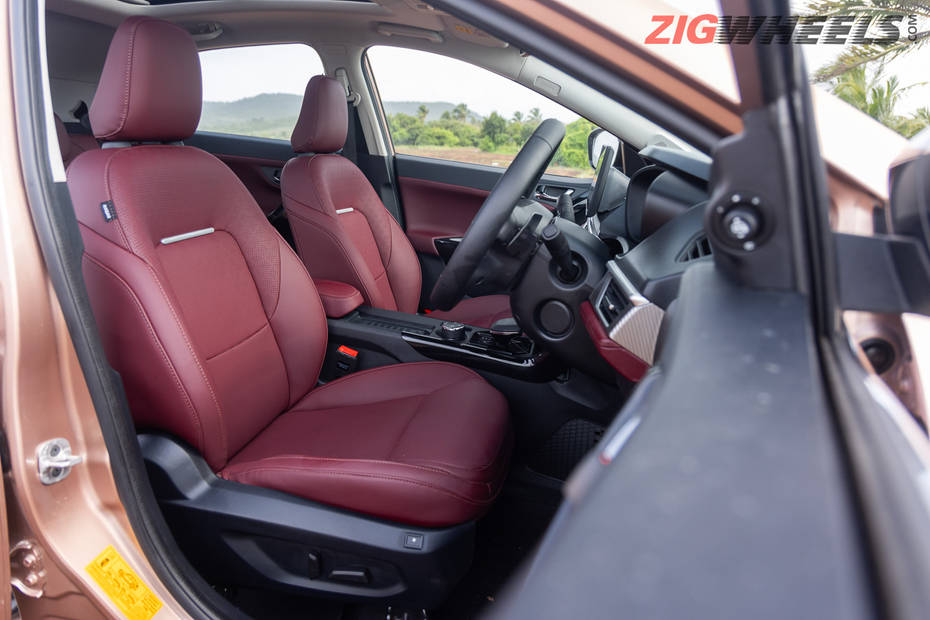
There are things about a car you can only tell after spending more time than what a test drive usually offers. This isn’t one of them. Walk into a Tata dealership, sit in the Nexon and hop into the Curvv right after. Sure, the colours may be different but it does look the same. No discernible difference in quality either which is pretty good to begin with.
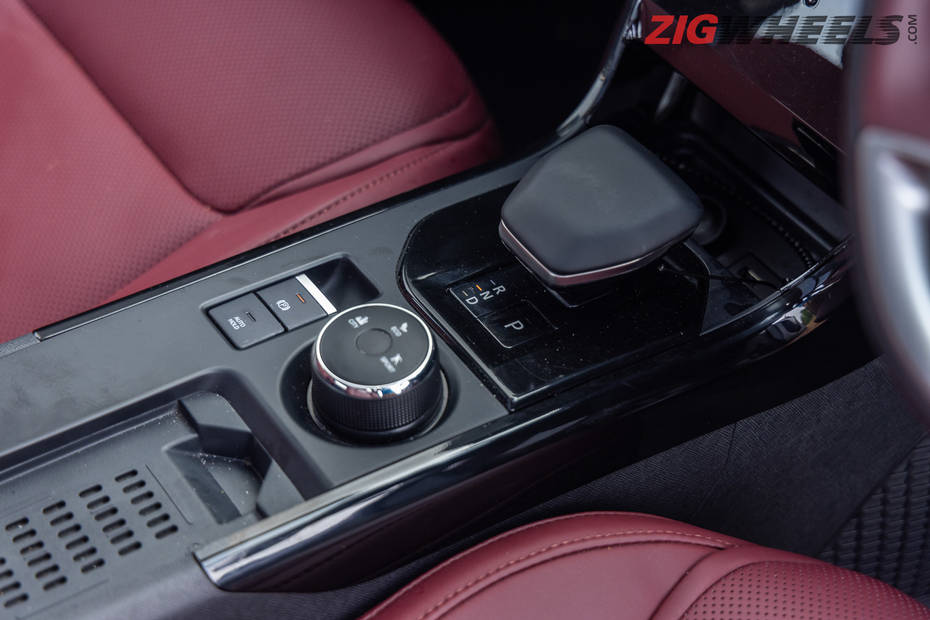
This is where the matter of a new platform seems to be more from the engineering standpoint than something you’d be able to discern after sitting in the car. Ergonomic oddities have been carried over from the Nexon, like the cramped centre console storage, the lack of a usable cup holder, the awkward to reach door pockets and how the seating position, especially if you’re tall, makes you sit further back than you’d deem necessary (only to discover the steering is only tilt-adjustable)
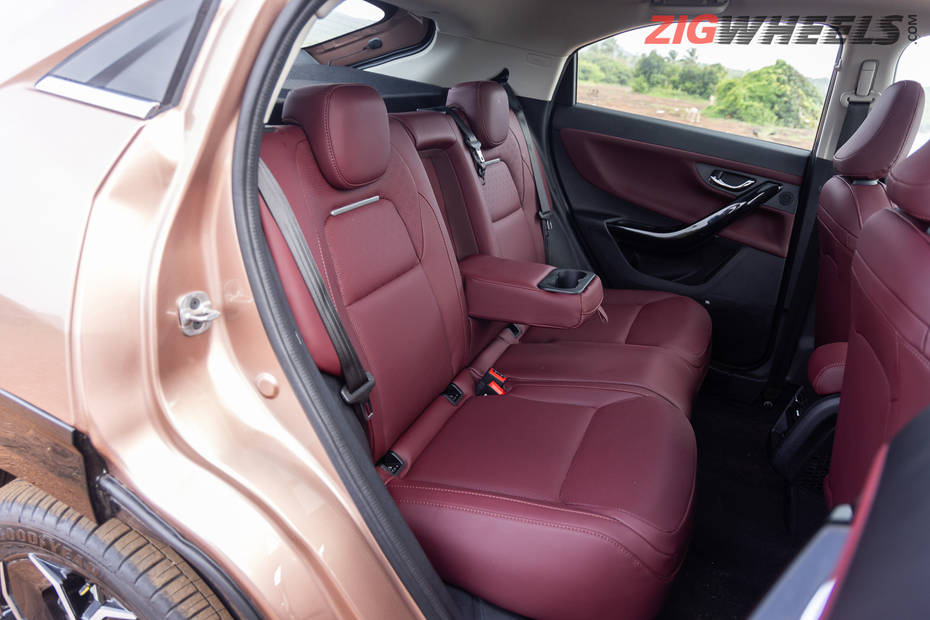
That being said, Tata’s done a great job with the seats. The upholstery feels premium, the seat cushioning is just the right level of firm and unless you’re exceptionally large, overall support is bang on too.

As for space, so long as you’re under 6ft tall, you’re unlikely to have any reason for complaint. 500 litres of boot space makes the Curvv practical for a family too. But those who hit the magic number 6 or anything above that in height, will want for more headroom.
The Tata Curvv is a loaded car before you get to the top-end variants with a 10.25 inch touchscreen, 8-speaker music system, cruise control and even a panoramic sunroof being offered from the mid-range model.
Highlights
|
Front Seat Ventilation |
6-way Power Adjustable Driver’s Seat |
|
Leatherette Upholstery |
Powered Tailgate with Kick Sensor |
|
Wireless Phone Charger |
Air Purifier With AQI Display |
Where the Curvv knocks it out of the park is the infotainment package:
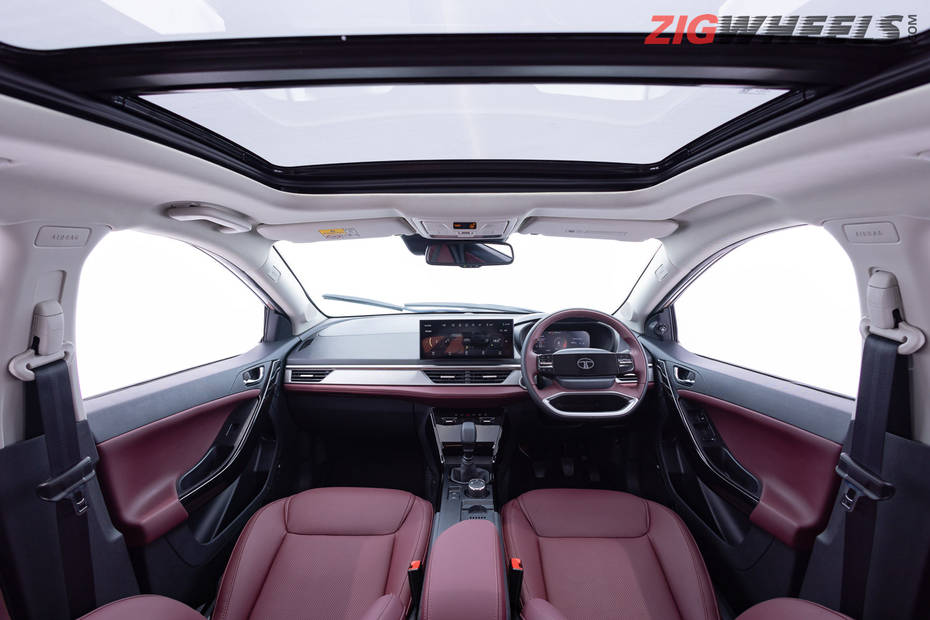
12.3 inch touchscreen: Great interface that’s responsive and easy to navigate. Supports wireless Android Auto and Apple CarPlay. The android automotive operating system offers the most phone-like usage and this same head-unit is shared with the Nexon, Harrier and Safari.
10.25 inch digital instrument cluster: Displays a large amount of data, but still easy to navigate through using the steering mounted controls with adequate customisation options through multi dial view customisation options like multi dial views. Either Apple Maps or Google Maps can be displayed here in a full screen format, depending on what software you're paired with i.e Google Maps can only be displayed on this screen using android auto while Apple phones can only show Apple maps here, owing to proprietary software limitations.
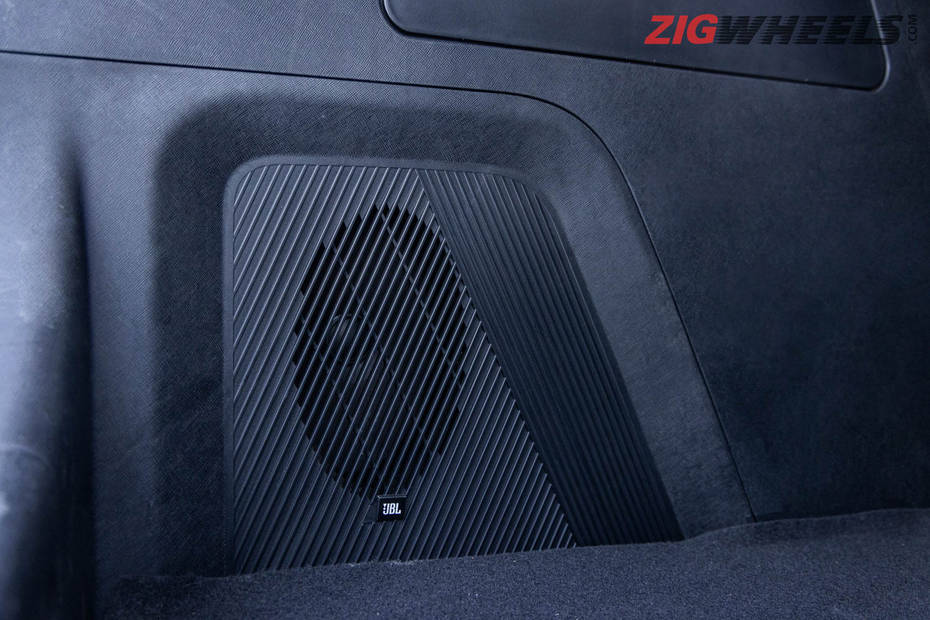
9-speaker music system: Easily among the best music systems offered in the segment. Simple.

360-degree camera: Like we’ve seen in the Nexon, Safari and Harrier, this high-res camera is exactly how camera display quality should be. Visibility at night is also dependable with this camera, provided there isn’t any dirt on the lens itself, of course.
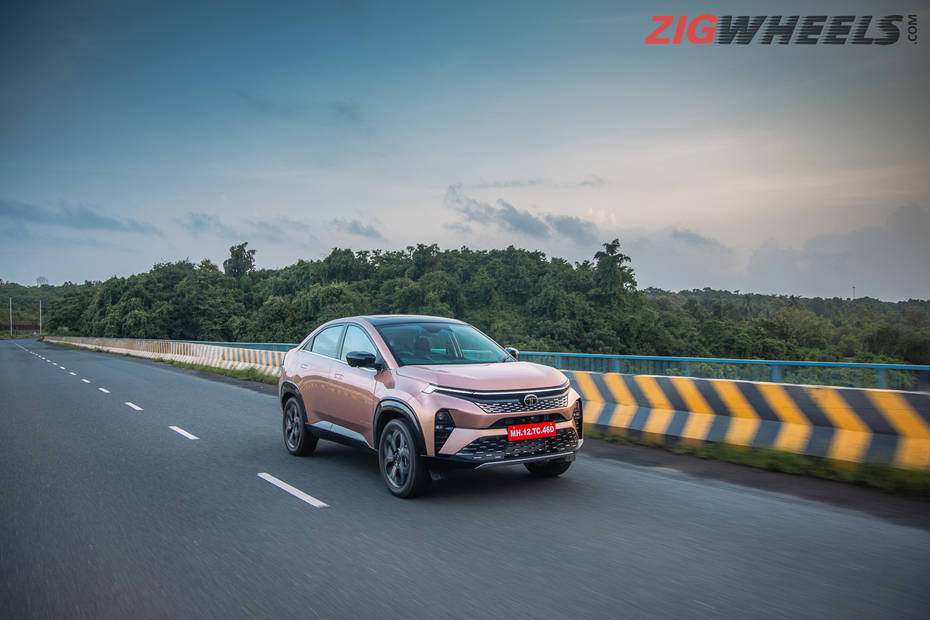
Safety features include 6 airbags, ABS with EBD, front and rear parking sensors, a high resolution 360 degree camera, hill hold and tyre pressure displays among others. The mirror-mounted cameras also link to the indicators and display the camera feed in the instrument cluster when active.
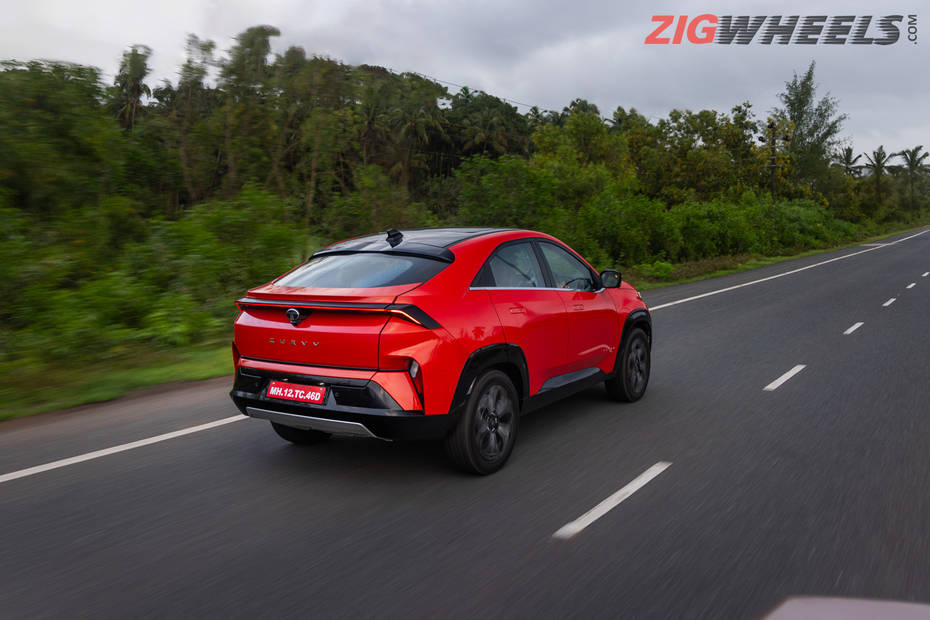
In India, advanced driver assistance systems (ADAS) come across as a great artist forever looking for the right audience.
The Curvv’s autonomous drive tech is as India-friendly as it gets, but India just isn’t a friendly place for these features. Features like lane-assist can come in handy but if there are any sharp bends in the road, the system disengages, so it’s best used on straight highways to reduce fatigue as the steering does dial in inputs to keep the car centred.
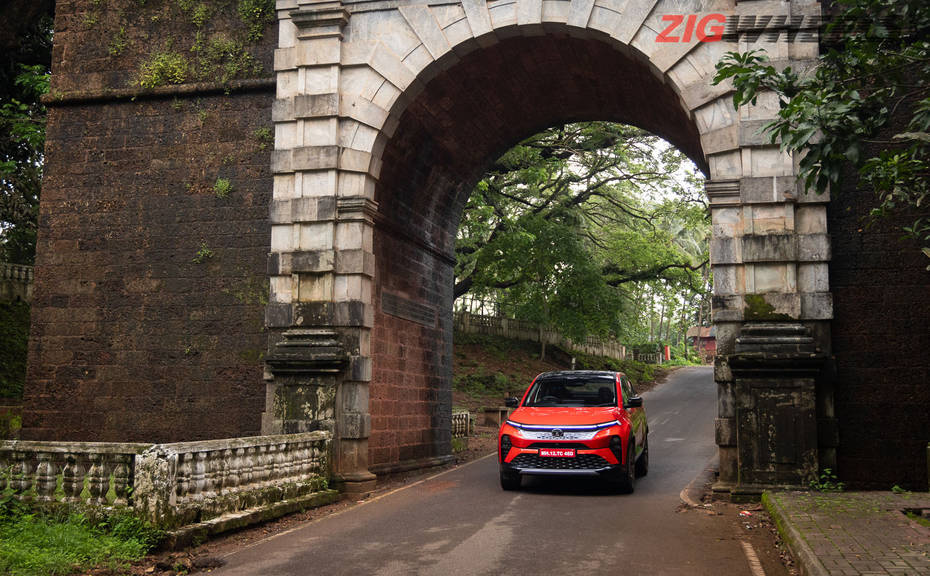
Collision mitigation can engage in situations where you don’t expect it too, which can catch you off guard. Blind spot detection and rear cross traffic alert can get triggered more than a teenager looking for something to rebel about and adaptive cruise control will feel too reactive on roads which have anything more than the lightest of traffic.
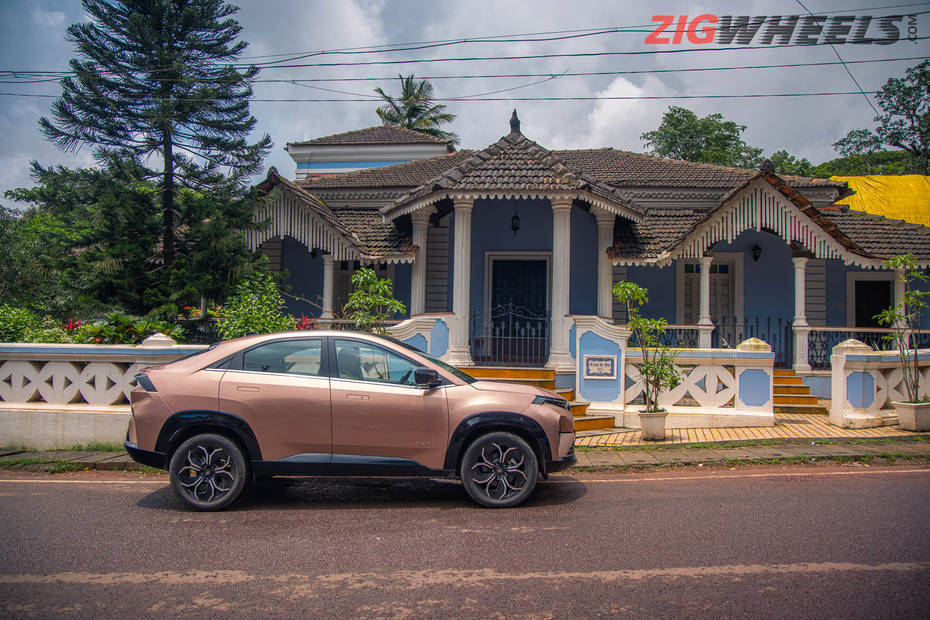
The honest truth is, for now, it’s almost impossible to simulate the sheer number of surprises Indian roads throw up meaning even the best ADAS isn’t something that should drive a purchase decision just yet, especially if you’re leaving it off most of the time. Tata should’ve left ADAS as an independent option like the sunroof.
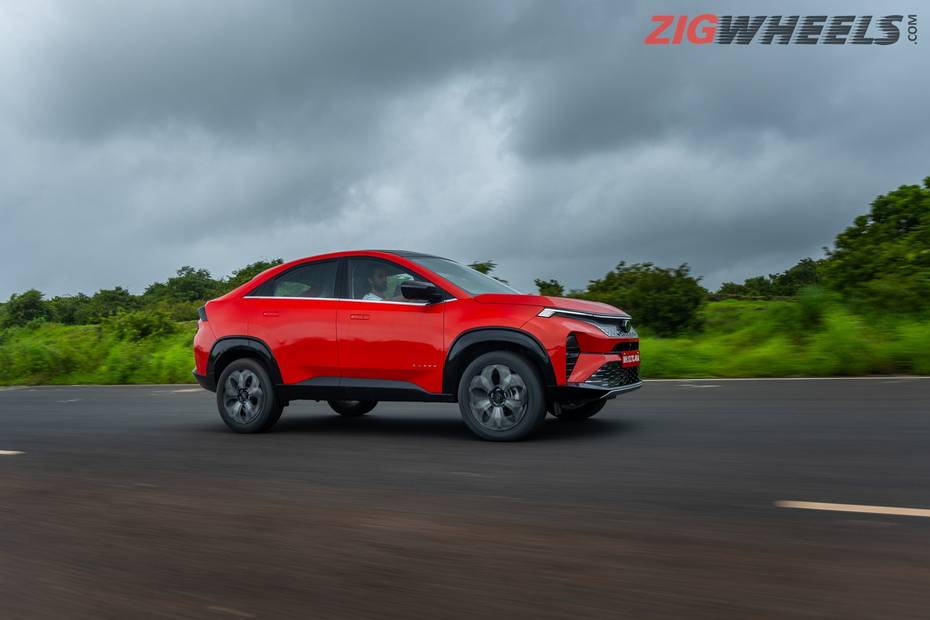
Diesel DCA: It’s hard to set a benchmark when most of the segment doesn’t offer a diesel anymore, save for the Hyundai-Kia twins, while the dual-clutch automatic is a brand new bit of tech altogether for a diesel engine. But it’s apparent from the moment you hit the push button starter that you’re in a diesel. While the engine clatter is muffled to an acceptable extent, there’s a good deal of vibrations that can be felt at the pedals.
|
Diesel Specifications |
|
|
Engine |
1.5 Diesel |
|
Power |
118PS |
|
Torque |
260Nm |
|
Gearbox |
6MT/7DCT |
That aside, it’s a motor that’s at home in any condition with enough grunt to manage everything from a boring commute to a weekend road trip. The automatic transmission is notably smoother between gear changes than the torque converter automatics offered in the Kia Seltos and Hyundai Creta and gets paddle-shifters for manual control too.
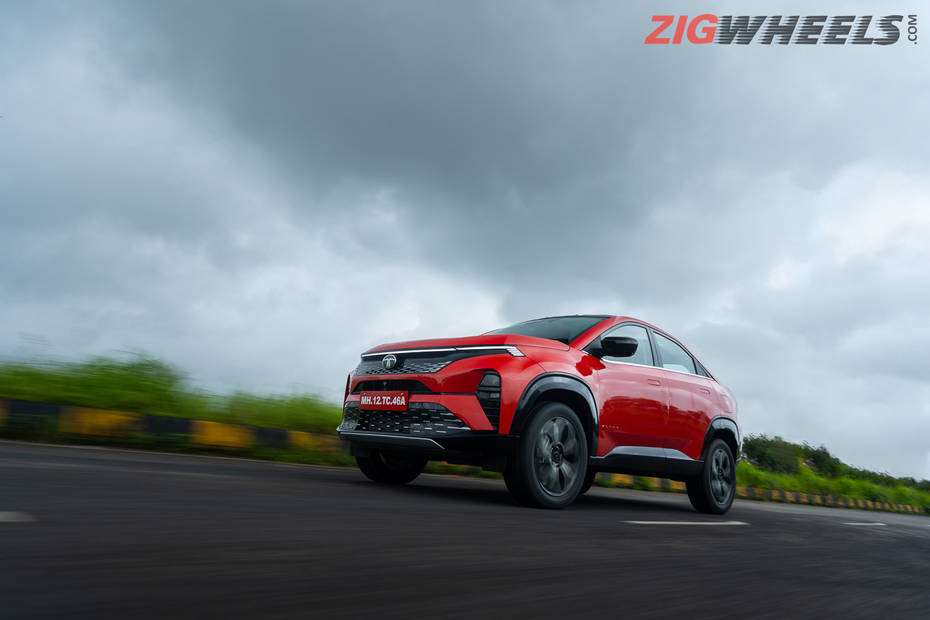
Functionally, it’s hard to fault this powertrain but it is lacking some polish compared to its competition. Essentially, it’s a smooth transmission not quite being matched up by an engine with as much finesse.
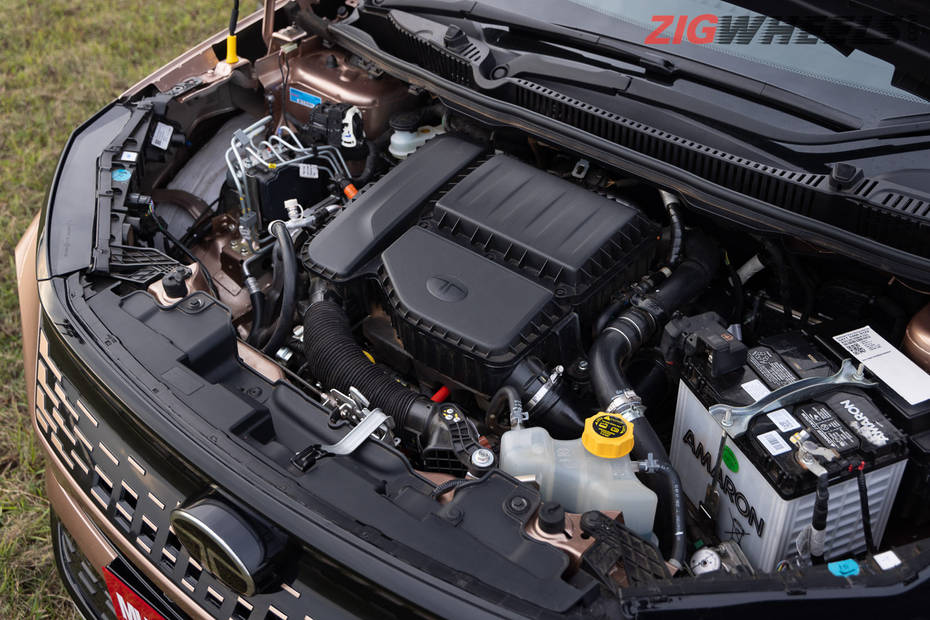
Petrol GDi Manual: Offered from the mid-range models up, the direct injection petrol feels like an improved and fine tuned version of the base petrol engine. Throttle response is smoother and the power/torque gains vs the Revotron are focused more on improving driveability.
|
Petrol Specifications |
||
|
Engine |
1.2 Turbo Petrol (Revotron) |
1.2 Turbo Petrol Direct Injection (Hyperion) |
|
Power |
120PS |
125PS |
|
Torque |
170Nm |
225Nm |
|
Gearbox |
6MT/7DCT |
6MT/7DCT |
Even with the manual transmission, it’s a convenient daily drive and while it sets no performance benchmarks, it’ll feel more relaxed with a full load than the naturally-aspirated petrols offered by rivals in the segment. That being said, it is neither as exciting nor as polished to drive as its turbo rivals.
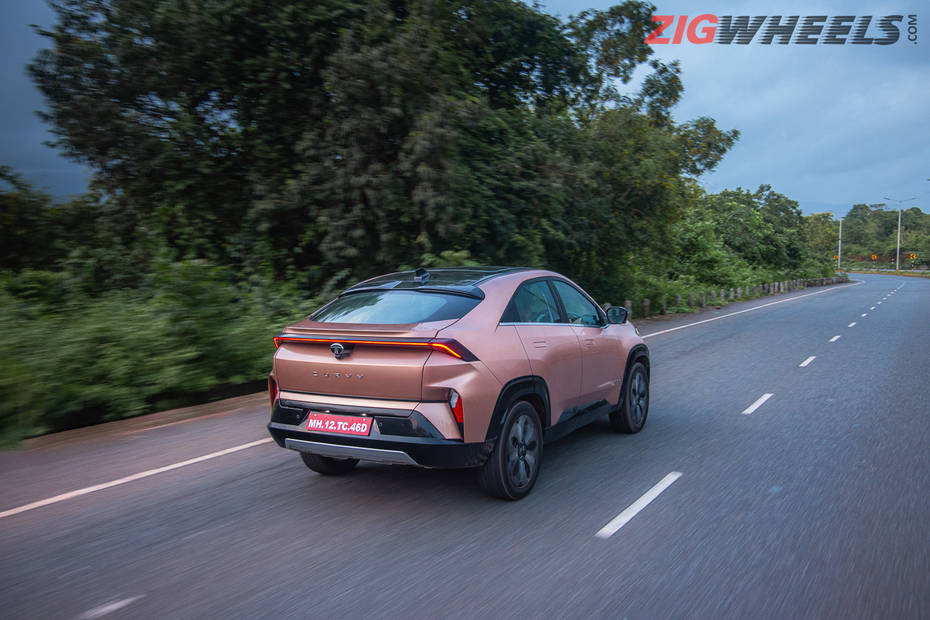
Ride comfort remains appreciable and even with the 18-inch alloys, it feels comfortable even on bumpy roads.

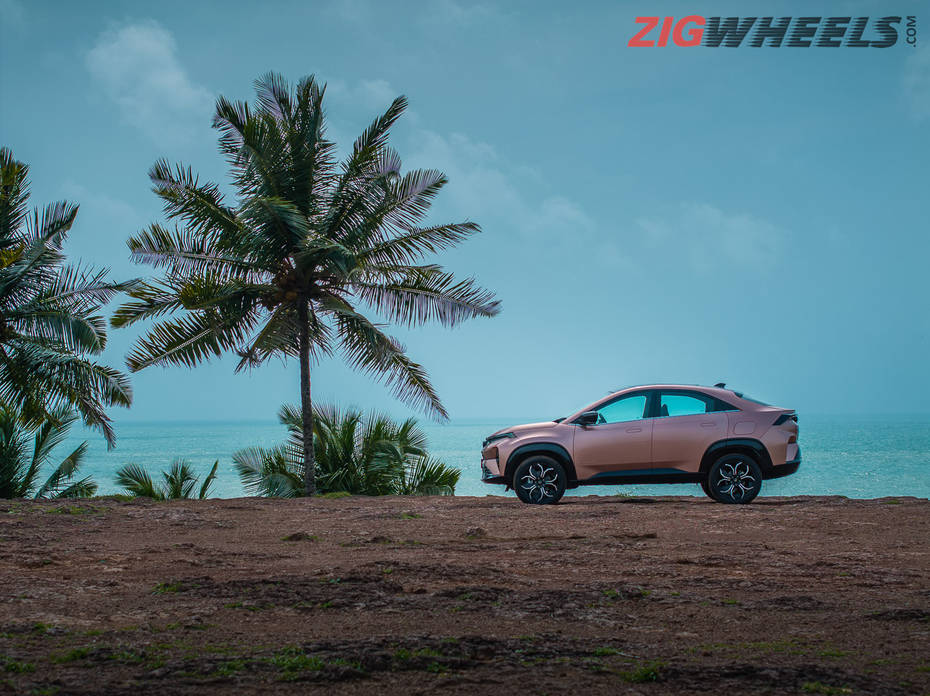
But most importantly, all of this needs to be backed up with a consistent and niggle free experience. Our petrol test car had glitches with the door locks, a display car’s tail gate wouldn’t unlock and the diesel DCA’s transmission threw up random warnings during our drive as well. A test car’s transmission also slipped from Drive to Neutral by itself mid-drive.
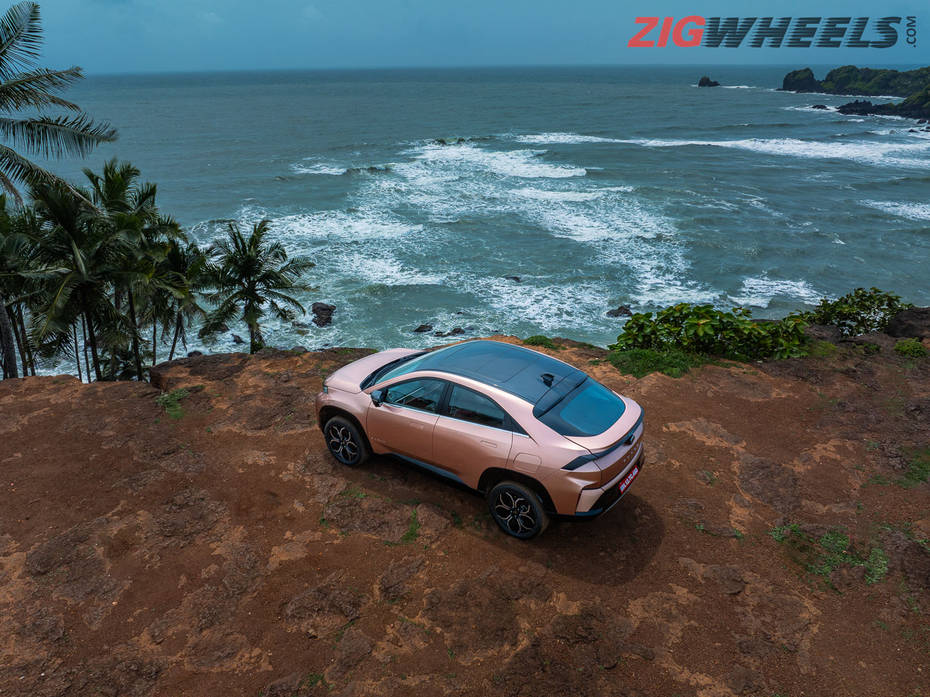
While this could be something specific to the press cars, it’s happened too often with Tata cars to not treat it as a pattern. If you’re specifically looking to buy a new bit of tech like the diesel DCA, it might be worthwhile to wait out the first lot of cars. Fact remains, the Curvv is a car we’d still happily recommend, it just isn’t one we can recommend with blind confidence.
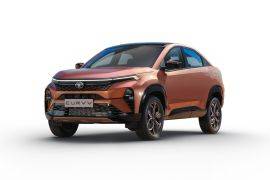

2023 Tata Nexon: Punching Above!

2024 Maruti Dzire Review: Playing It Safe

Hyundai Verna vs Honda City vs Skoda Slavia vs Volkswagen Virtus:...

2023 Hyundai Verna First Drive: Balance Achieved!

Mahindra XUV 3XO: First Drive Review

New Maruti Suzuki Fronx Driven: This Crossover Gives Baby Grand...

Kia Syros Review: Good Thing. Small Package.

Honda City First Drive 2023 | Do you love sedans too?
 Tata Nexon
Tata Nexon
 Tata Punch
Tata Punch
 Maruti Dzire
Maruti Dzire
 Hyundai Verna
Hyundai Verna
 Mahindra XUV 3XO
Mahindra XUV 3XO
India's largest automotive community
 Tata Punch
Rs. 5.99 Lakh
Tata Punch
Rs. 5.99 Lakh
 Tata Nexon
Rs. 7.99 Lakh
Tata Nexon
Rs. 7.99 Lakh
 Tata Tiago
Rs. 4.99 Lakh
Tata Tiago
Rs. 4.99 Lakh
 Tata Harrier
Rs. 14.99 Lakh
Tata Harrier
Rs. 14.99 Lakh
 Tata Safari
Rs. 15.49 Lakh
Tata Safari
Rs. 15.49 Lakh
 Kia Syros
Rs. 8.99 Lakh
Kia Syros
Rs. 8.99 Lakh
 Skoda Kylaq
Rs. 7.89 Lakh
Skoda Kylaq
Rs. 7.89 Lakh
 Mahindra Thar ROXX
Rs. 12.99 Lakh
Mahindra Thar ROXX
Rs. 12.99 Lakh
 Tata Punch
Rs. 5.99 Lakh
Tata Punch
Rs. 5.99 Lakh
 Hyundai Creta
Rs. 11.10 Lakh
Hyundai Creta
Rs. 11.10 Lakh